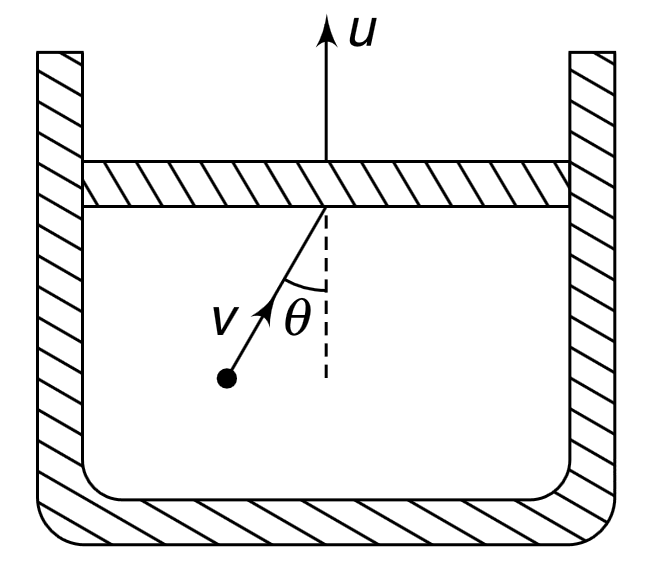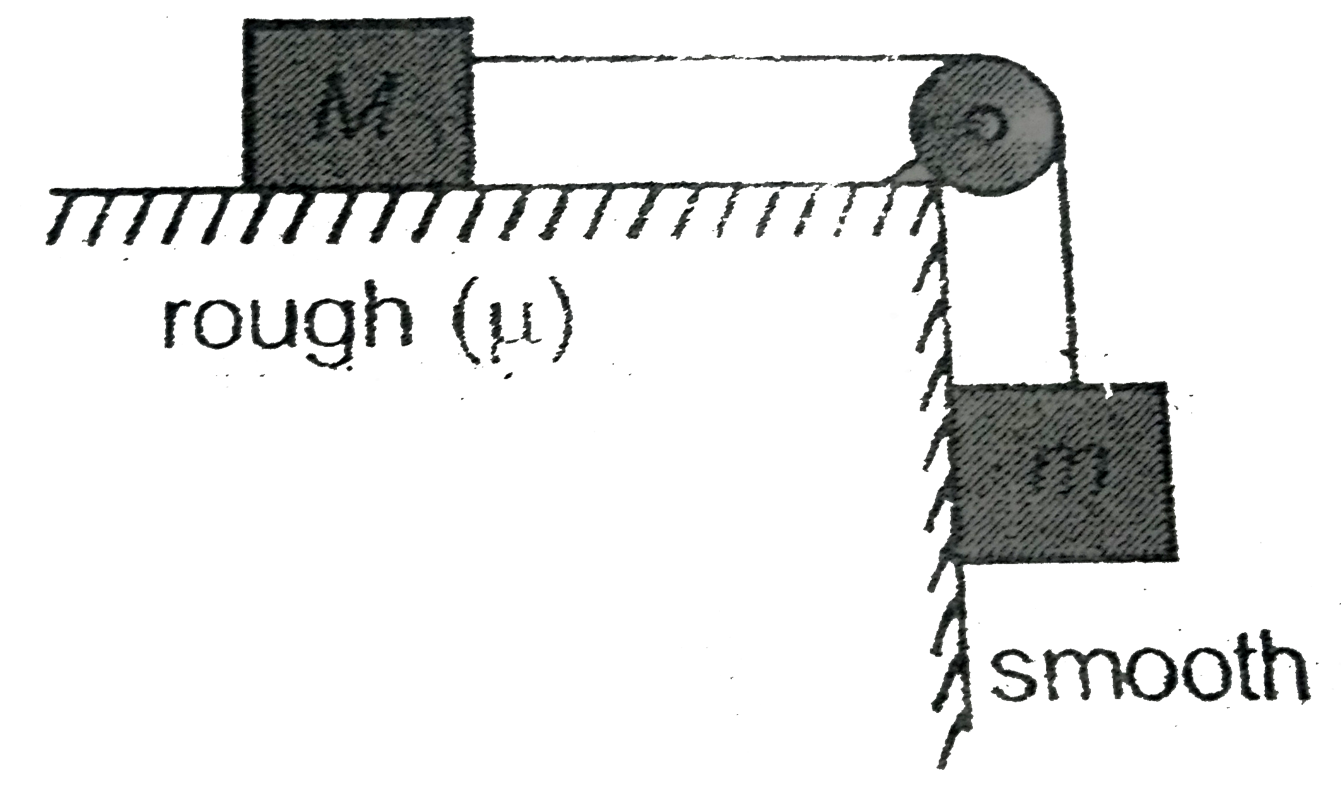Two block A and B of equal mass are connected using a light inextensible string passing over two light smooth pulleys fixed to the blocks (see fig). The horizontal surface is smooth. Every segment of the string (that is not touching the pulley) is horizontal. When a horizontal force F1 is applied to A the magnitude of momentum of the system, comprising of A + B, changes at a rate R. When a horizontal force F2 is applied to B (F1 not applied) the magnitude of momentum of the system A + B once again changes at the rate R. Which force is larger −F1orF2 ?

The correct Answer is:F2
Step by step video, text & image solution for Two block A and B of equal mass are connected using a light inextensible string passing over two light smooth pulleys fixed to the blocks (see fig). The horizontal surface is smooth. Every segment of the string (that is not touching the pulley) is horizontal. When a horizontal force F_(1) is applied to A the magnitude of momentum of the system, comprising of A + B, changes at a rate R. When a horizontal force F_(2) is applied to B (F_(1) not applied) the magnitude of momentum of the system A + B once again changes at the rate R. Which force is larger - F_(1) or F_(2) ? by Physics experts to help you in doubts & scoring excellent marks in Class 11 exams.
Topper's Solved these Questions
Similar Questions
An ideal gas is inside a cylinder with a piston that can move freely. The walls of the cylinder and piston are non- conducting. The piston is being moved out of the cyl- inder at a constant speed u.
(a) Consider a gas molecule of mass m moving with speed v(>>u). It hits the piston elastically at an angle of incidence q. Calculate the loss in kinetic energy of the molecule.
(b) If the area of piston is A and pressure of the gas is P, calculate the rate of decreases of molecular kinetic energy of the gas sample.
(c) Ifu>> molecular velocities, at what rate will the gas lose its molecular kinetic energy
 04:31View Solution
04:31View SolutionLet →u be the initial velocity of a particle and →F be the resultant force acting on it . Describe the path that the particle can take if
(a) →u×→F=0and→F=constant
(b) →u.→F=0and→F=constant
In which case can the particle retrace its path .04:16View SolutionA light string passing over a smooth light pulley connects two blocks of masses m_1 and m_2 (vertically). If the acceleration of the system is g//8 , then the ratio of the masses is
05:30View SolutionTwo blocks A and B , each of mass 10 kg , are connected by a light string passing over a smooth pulley as shown in the figure. Block A will remain at rest if the friction on it is
02:24View SolutionTwo blocks are connected by an inextensible light string, the string is passing over smooth, light pulley as shown. Find the acceleration of blocks and tension in the string, reaction in pulley.
05:08View SolutionIn the Fig. the blocks 'A' and 'B' are connected with an inextensible string. The block 'A' can slide on a smooth horizontal surface.
02:48View SolutionA block of mass M is placed on a rough horizontal surface. It is connected by means of a light inextensible string passing over a smooth pulley . The other end of string passing over a smooth pulley. The other end of string is connected to a block of mass m. There is no friction between vertical surface and block m

If the whole system ( horizontal surface + blocks ) accelerates towards right the value of maximum on the horizontal surface is06:26View SolutionA light string passing over a smooth light pulley connects two blocks of masses m_1 and m_2 (vertically). If the acceleration of the system is g/8 then the ratio of the masses is
01:45View SolutionA block of mass m_(1)=2 kg is kept on a smooth horizontal table. Another block of mass m_(2)=1 kg is connected to m_(1) by a light inextensible string passing over a smooth pulley as shown in the figure. If the blocks are released, what will be the (a) acceleration of each block (b) tension in the string?
03:39View SolutionTwo identical blocks A and B each of mass M are connected to each other through a light string. The system is placed on a smooth horizontal floor. When a constant force F is applied horizontally on the block A, find the tension in the string.
View SolutionTwo blocks of masses 2 kg and 4 kg are connected by a light string passing over a light smooth pulley clamped to the edge of a horizontal table. The 2 kg block is on the smooth horizontal table and the other block is hanging vertically, (i) Find the acceleration of the stem if it is released from rest, (ii) Find the tension in the string.
01:45View SolutionTwo blocks of masses 2 kg and 4 kg are connected by a light string passing over a light smooth pulley clamped to the edge of a horizontal table. The 2 kg block is on the smooth horizontal table and the other block is hanging vertically. (i) Find the acceleration of the stem if it is released from rest. (ii) Find the tension in the string.
View SolutionTwo identical blocks A and B each of mass M are connected to each other through a light string. The system is placed on a smooth horizontal floor. When a constant force F is applied horizontally on the block A, find the tension in the string.
04:23View SolutionTwo blocks of masses 2 kg and 4 kg are connected by a light string passing over a light smooth pulley clamped to the edge of a horizontal table. The 2 kg block is on the smooth horizontal table and the other block is hanging vertically. (i) Find the acceleration of the stem if it is released from rest. (ii) Find the tension in the string.
03:28View SolutionA light string passing over a smooth light pulley connects two blocks of masses m1 and m2 (vertically). If the acceleration of the system is g/8, then the ratio of the masses is
03:23View Solution

